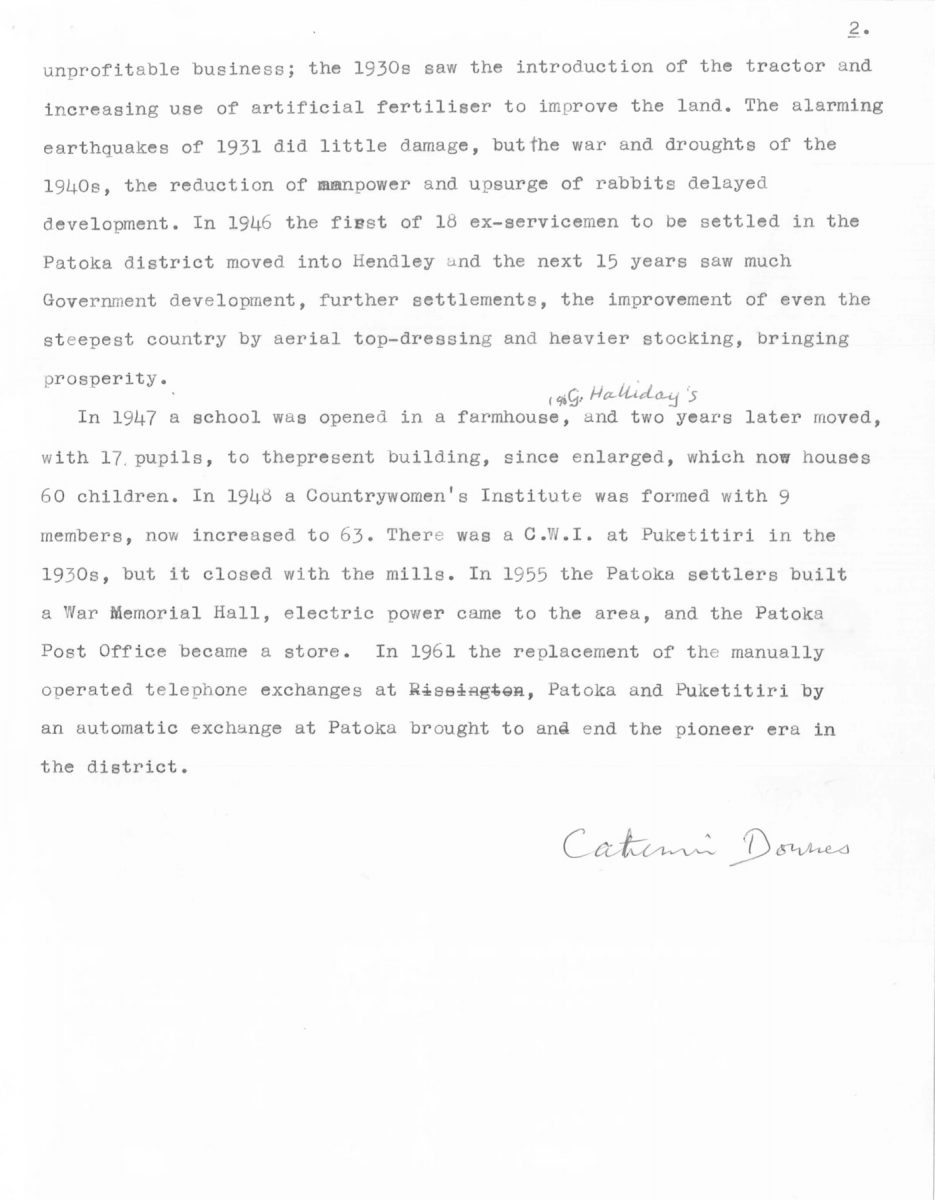AN HISTORICAL SURVEY OF MY DISTRICT
Patoka and Puketitiri. Northern Hawkes Bay.
In 1861 Colonel Whitmore obtained the Patoka and Puketitiri districts as part of a Crown grant. It was infertile, hilly country, largely divested of the original bush by fire, and used by the Maori only for occasional bird-snaring expeditions. Rissington was accessible from the coast by water, to Patoka a road was built by soldiers, and this was later taken over by the Government and extended to supply the garrisons near Taupo during the Maori wars. There was a stockade at Patoka, but the area saw no fighting.
In 1873, when he sold the area to Robert Rhodes, Colonel Whitmore’s stock return showed 28,000 Merinos grazing the Kaweka Mountains and foothills, which carried tussock and native grasses. Year by year acres of fern were burned and sown to English grasses, which often reverted to fern and manuka because of inadequate stocking. The poor soil and inaccessibility of the area, low wool prices and valueless carcases made farming unprofitable. In the 1880s Hallet, of Puketitiri, milled flax growing on his property, but it was of poor quality. By the 1890s refrigeration had made mutton a saleable commodity, and Romneys replaced Merinos, fencing improved and cattle increased. In 1893 the first fodder crop was sown at Patoka.
At this time a timber mill was built at Hendley, near Patoka, and in 1903 milling began at Puketitiri and continued until 1942. Puketitiri became a thriving township, with a hotel and a coach service twice weekly to Napier. In 1917, although farm produce still travelled by dray, a daily motor coach took over the mail and passenger services, and telephone exchanges were installed at Patoka and Puketitiri.
In the 1920s Patoka lost the school which had catered for the Hendley mill children. The land was very sparsely settled, farming was still an













Do you know something about this record?
Please note we cannot verify the accuracy of any information posted by the community.